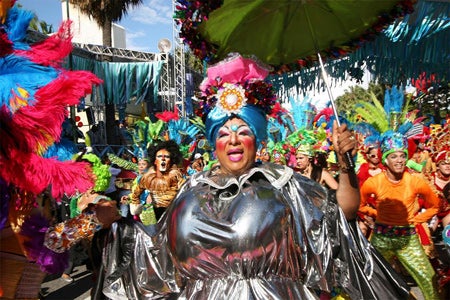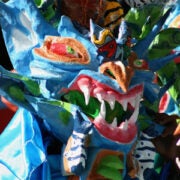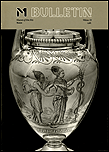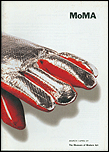Upside down world: Rubén Durán on his photographs of Carnaval

Photographer: Rubén Durán | Creole/Fantasy Influence (Carnival in Dominican Republic) | February or March circa 2009-2010 | Cotuí, Dominican Republic | Photograph © HCC Central College – Rubén Durán
Rubén Durán, Senior Web & Video Developer at Houston Community College Central’s Curriculum Innovation Center, was kind enough to give us a little background on his collection of photographs of carnaval, which were recently released in the Artstor Digital Library.
The riotous, rebellious world of carnaval came to life for me when I traveled to my native Dominican Republic to recapture some of my youth. The result is a collection of 550 images now available in the Artstor Digital Library in collaboration with the Houston Community College Central Fine Arts Division. The vibrant colors document the oldest carnaval celebrations in the Americas and I discovered at the Caribbean crossroads, Creole, Spanish, and African cultures blending with the indigenous Taino people to create festivals unlike any others I’ve seen.
For 500 years my island nation has reveled in its rambunctious customs – music, dancing, masks and mayhem. I, however, found that carnaval is something far more rich and complex than a gaudy festival. These images capture the joyful chaos and outrageous costumes of carnaval parades, but also uncover a powerful statement of identity and political satire.
My original reason for going was to introduce my culture to the HCC classrooms here in Houston. By the second trip, I realized my lens was focusing more on my self-discovery than any educational experience I hoped to share. I began to understand why I was subversive by nature. Loud, musical, improvisational, disorganized, you name it, I could see all of carnaval in me. By the third trip I understood so much more about me and my roots and I was able to join in the playful nature of carnaval and its exuberance in the streets.
- Photographer: Rubén Durán | Creole Influence (Carnival in Dominican Republic) | February or March circa 2009-2010 | Cotuí, Dominican Republic | Photograph © HCC Central College – Rubén Durán
The collection documents the pre-Lenten festival in five different cities across the Dominican Republic, each with its own customs, costumes, and characters. Each one is distinctive, shaped by local history, politics, folklore, even the kinds of found objects available to make the ornate costumes.
The chaotic, fantastic world of carnaval is an expression of the imagination, values and traditions of the Dominican people – my people – and, as dictators and occupying armies have learned, carnaval is first and foremost, subversive. No authority figure is safe from its satiric sting.
In this world turned upside down, powerful politicians are played as buffoons, men dress as women, women as men, masqueraders dressed as nuns and priests caper obscenely, and a judge marches down the street surrounded by lawyers waving fistfuls of cash. Laborers parade in magnificent costumes, mighty princes of the fantastic world of carnaval, all displaying identities for their neighbor to share the irony.
I had help with this project. I was guided across the country by its foremost expert, Dr. Dagoberto Tejada Ortiz, Director of the Institute of Dominican Folklore, and with fellow filmmaker Donna Pinnick, of HCC’s Fine Arts staff, helped produce Colores Del Carnaval Dominicano, a documentary. Many professors from many disciplines helped design the educational film, which covers the history, social implications, the art, the music, the character and customs of the Dominican carnaval. The film is available for classroom use and other presentations; for information, contact me at Ruben.Duran@hccs.edu.




